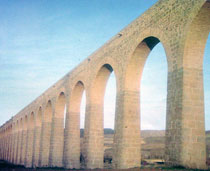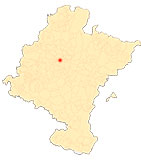Façade of Pamplona Cathedral
Ventura Rodríguez y Navarra
Ventura Rodríguez (1717-1785), one of the best Spanish architects of his time, represents a transition between the Baroque of Roman tradition and academic architecture. Author of a multitude of projects of numerous architectural typologies spread throughout Spain, among his best known works are the Pilar Chapel in Zaragoza (1750), the church of San Marcos in Madrid (1753), the convent of Agustinos Filipinos in Valladolid (1759), and the Palace of Liria (1774). In Navarre, in addition to the cathedral façade of Pamplona, he was the manager of the project of the water supply from Subiza to the capital (1782), where he moved for forty days to take notes on the ground, and of the plans for the Royal House of Mercy of Tudela (1780), modifying the initial design made by the local architect José Marzal.
GOÑI GAZTAMBIDE, José, "La fachada neoclásica de la catedral de Pamplona", in Príncipe de Viana, nos. 118 and 119 (1970), pp. 5-64.
GUIJARRO SALVADOR, Pablo, "Memoriales, impresos e insultos contra Santos Ángel de Ochandátegui, director del project de nueva fachada", in Cuadernos de la Chair de Patrimonio y Arte Navarro, nº 1, 2006, pp. 109-131. (in press).
LARUMBE MARTÍN, María, "Neoclassicism", in La catedral de Pamplona, Pamplona, CAN, 1994, vol. II, pp. 75-89.
MOLINS MUGUETA, José Luis, "Ventura Rodríguez y el Academicismo en Navarra", in El Arte en Navarra, Pamplona, Diario de Navarra, 1994, t. II, pp. 529-544.
YÁRNOZ LARROSA, José, Ventura Rodríguez y su obra en Navarra, Madrid, Real Academia de Bellas Artes de San Fernando, 1944.












